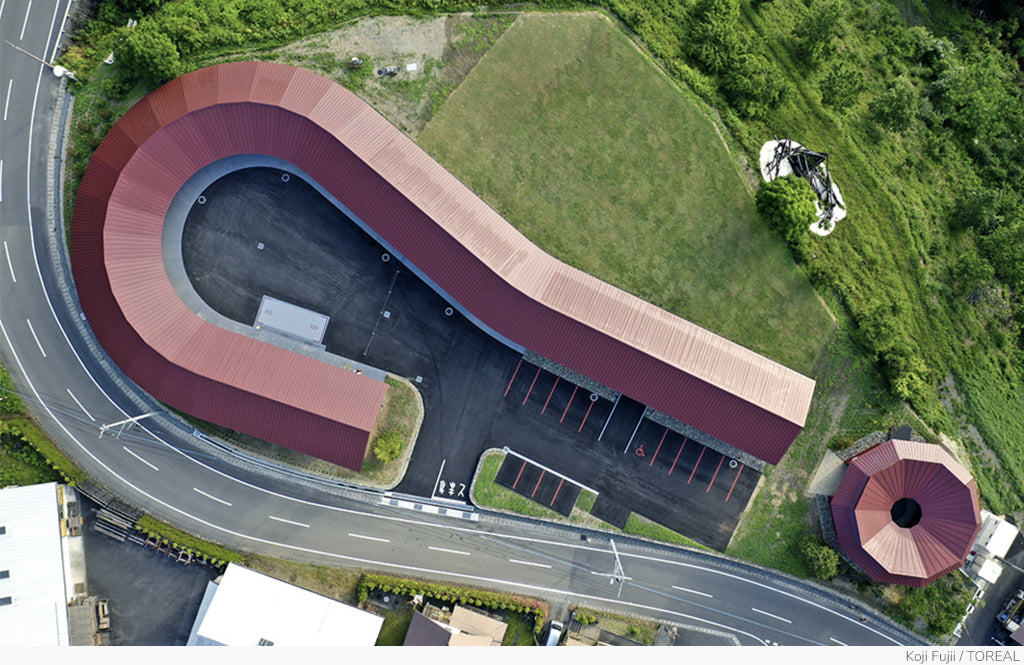Kamikatsu Zero Waste Centre by Hiroshi Nakamura & NAP
Waste Not, Want a Lot
 Sustainable design is all the rage, but it is rare to see projects which embrace sustainability as whole heartedly as the Kamikatsu Zero Waste Centre. Perhaps that's because what is at stake here is not just environmental credentials, but the opportunity to inspire and rejuvenate a community.
Sustainable design is all the rage, but it is rare to see projects which embrace sustainability as whole heartedly as the Kamikatsu Zero Waste Centre. Perhaps that's because what is at stake here is not just environmental credentials, but the opportunity to inspire and rejuvenate a community.
Kamikatsu is a small town located in an idyllic spot in Shikoku island of Japan, with stunning views across mountains, rivers, paddy fields and lush forests. The latter had long been a lifeline for the local community, which has experienced a steep decline in population with the demise of the forestry industry. Of the 800 or so households left in the town over 50% are elderly. This creates multiple social issues, such as the hollowing-out of government services and the loss of civic pride, but there is also a strong will to regenerate. In 2003, spurred on by the desire to preserve the environment and the lack of funds to build a new rubbish incinerator, the town became the first in Japan to adopt a Zero Waste target. At the heart of this strategy is a remarkable waste recycling centre designed by architects Hiroshi Nakamura & NAP.
First and foremost, the centre is designed to function effectively. The waste sorting bays are arranged around a horseshoe-shaped courtyard which provides clear visibility and easy access for visitors - important as the waste has to be separated into 45 different categories. The collection points are in open-sided pavilions which not only help to disperse any odours but also offer a glimpse of the mountains beyond. The tall roof with wide overhanging eaves and slanting columns, designed to aid visibility and facilitate truck access, also give the structure a lively, dynamic appearance.
The timber used for construction comes from local cedar forests, with raw logs rather than processed planks used as much as possible in order to minimise waste. Disused items from the local community were upcycled to add visual interest: a patchwork of old windows form an impressive facade, broken pottery pieces are used as aggregate and blue plastic farm produce baskets are reborn as a funky shelving system - a clever gesture which symbolises regeneration and emphasises the bond with the local community. The community spirit is further strengthened by the addition of a community hall, complete with mismatched chairs and tiles, and a "reuse" shop, where you can leave behind items you no longer need for others to take away for free. With its sleek display areas and stylish vibe, the shop will give the best design stores the run for their money.
Perhaps understanding the opportunity to impress and inspire, the centre comes with a small, round shaped hotel. Seen from above, this resembles the dot (".") of the question mark ("?") formed by the curvaceous structure of the centre. In fact, the questioning of our rampant consumerism is fundamental to the philosophy behind the Zero Waste centre: why buy new things? why throw things away? This thought provoking building not only provides the best rebuff to our throwaway culture, but also demonstrates the ability of great architecture to educate and inspire.

















Links
Product Inspiration
Embrace the spirit of sustainability with the Ocean bench from Mater, made with plastics from disused fishing nets, the recycled trolley from Bordbar and the Carpet Reloaded rug from Golran, reimagined from pieces of vintage carpets.
For attractive and environmentally friendly lights go for the Scraplight Disc and Drop suspension lights from Graypants, made entirely from recycled cardboard sheets, as well as the Air table light from LZF, made from sustainably sourced natural wood veneers.
Go back to nature with organically inspired accessories such as the Duck pot from 101 Copenhagen, the Amazonia wallpaper from Mind The Gap and the Florida bowl from Ghidini 1961.
Products
View all









